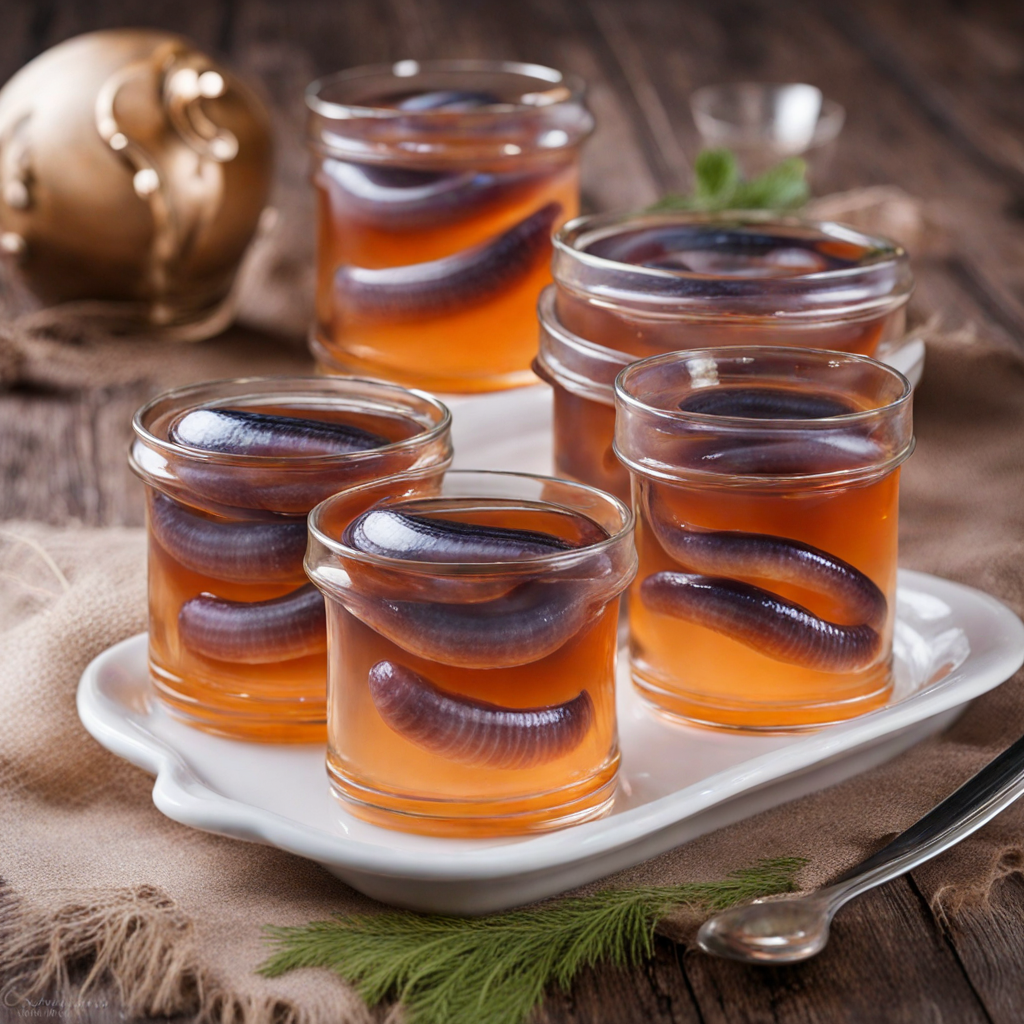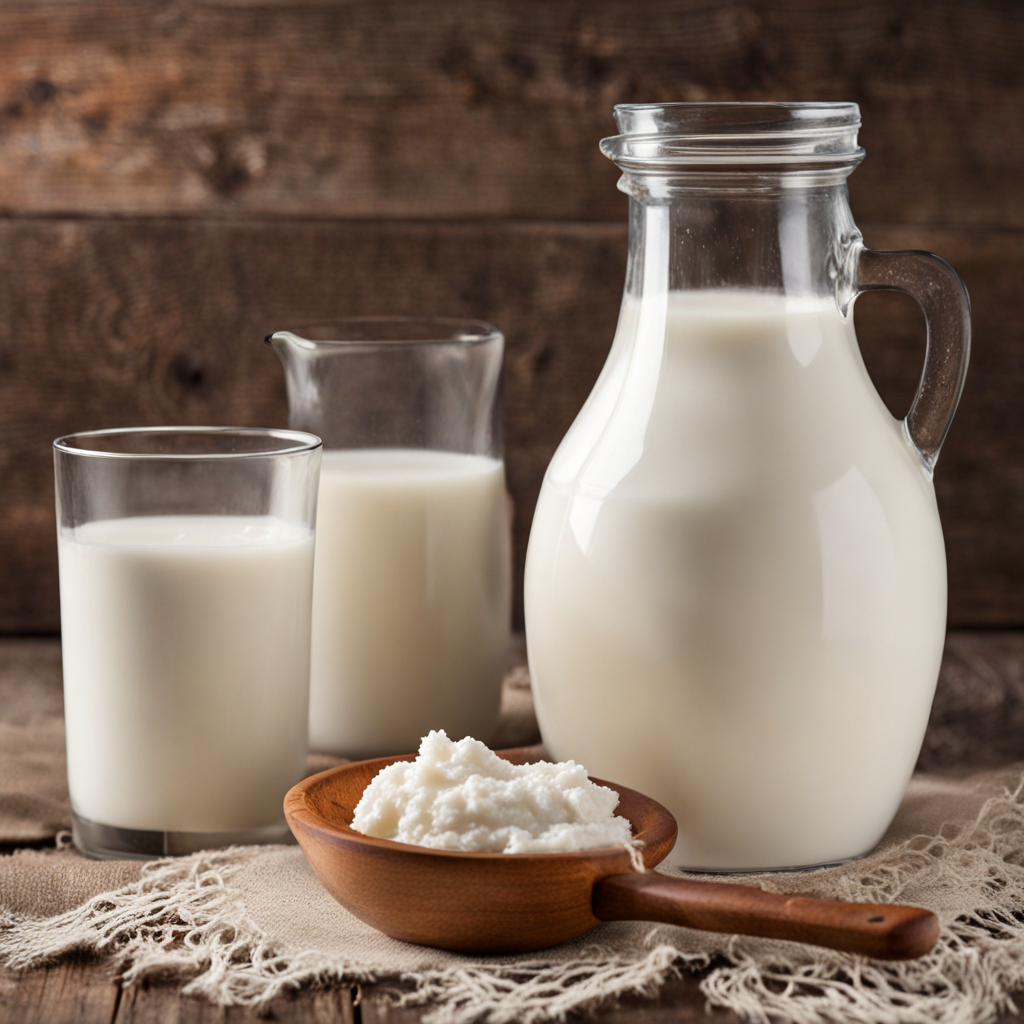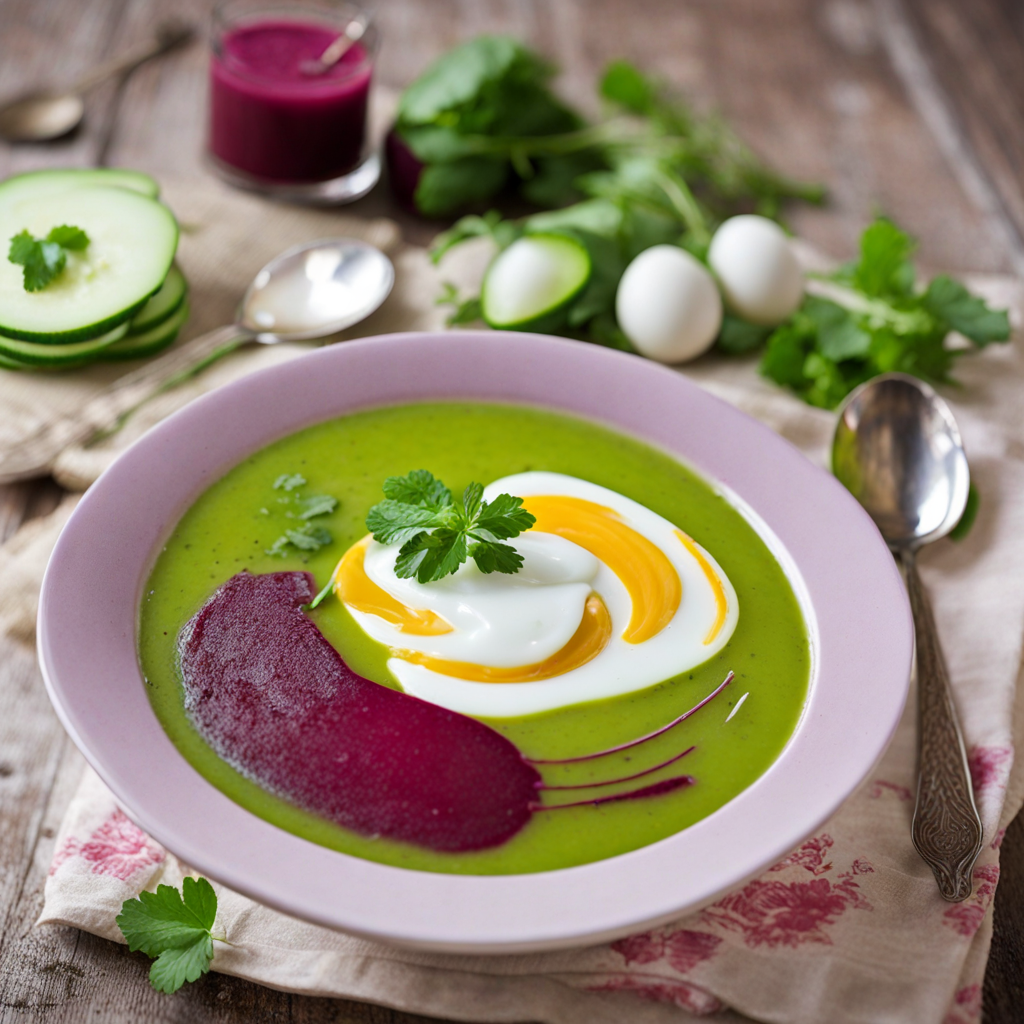Lamprey in Jelly
Lamprey in Jelly is a traditional Latvian delicacy that showcases the unique flavors and culinary heritage of the region. This dish features lamprey, a jawless fish with a long, eel-like body, which is typically prepared by poaching or simmering until tender. The lamprey is then carefully placed in a savory gelatin made from its own stock, infused with aromatic herbs and spices. The resulting dish is not only visually striking, with its rich, dark hues and glistening jelly, but also offers a complex taste profile that combines the subtle brininess of the fish with the earthy, herbal notes of the gelatin. The texture of Lamprey in Jelly is one of its most intriguing aspects. The firm yet tender flesh of the lamprey contrasts beautifully with the smooth, silky jelly that envelops it. As you take a bite, the jelly melts in your mouth, releasing the rich flavors of the fish, while the gelatin provides a satisfying, almost luxurious mouthfeel. This dish is often served chilled, making it a refreshing option for those looking to explore something distinctively different. It is commonly accompanied by slices of rye bread or boiled potatoes, which complement the dish's depth without overshadowing its unique taste. One of the best ways to enjoy Lamprey in Jelly is to appreciate its cultural significance in Latvia. Traditionally served during special occasions and festive gatherings, this dish represents the resourcefulness of Latvians in utilizing local ingredients and preserving them in creative ways. As you savor each bite, you are not just experiencing a meal but also a piece of Latvian history and tradition. Whether you're a curious food enthusiast or an adventurous eater, Lamprey in Jelly invites you to dive into the lesser-known flavors of Latvian cuisine, offering a taste that is both intriguing and unforgettable.
How It Became This Dish
Origin of Nēģu zupa Nēģu zupa, or eel soup, is a traditional Latvian dish that has its roots deeply entrenched in the country's coastal regions, particularly around the Baltic Sea and the rivers that flow into it. The origins of this dish can be traced back to the fishing communities that thrived in Latvia, where eels were abundant and served as a vital source of sustenance. The name "nēģi" refers specifically to the European eel (Anguilla anguilla), which has been a significant catch for generations of local fishermen. In the early days, before the advent of modern refrigeration and transportation, preserving food was a priority for these communities. Eels were often smoked, salted, or prepared in various ways to extend their shelf life, leading to the development of numerous regional recipes. Nēģu zupa emerged as a practical solution to transform leftover eels and scraps from the fishing process into a hearty, nourishing meal that could feed families during the long winter months. Cultural Significance Nēģu zupa holds a special place in Latvian culture, not just as a dish but as a representation of the country's deep connection to its natural resources and culinary traditions. The soup is often associated with rural life and the rhythm of the seasons, highlighting the importance of fishing as a source of livelihood and community bonding. It is frequently served during festive occasions, family gatherings, and holiday celebrations, showcasing its role in bringing people together. In a broader context, the dish symbolizes the resilience of the Latvian people, who have adapted their culinary practices to incorporate local ingredients and traditions while navigating the challenges posed by historical events, such as invasions and occupations. Nēģu zupa is not merely a meal; it is a testament to Latvian heritage, reflecting the ingenuity of home cooks who have passed down recipes through generations. Ingredients and Preparation The preparation of Nēģu zupa typically involves a few core ingredients, including the eels themselves, root vegetables, and local herbs. Commonly used vegetables include potatoes, carrots, and onions, which add depth and sweetness to the dish. The recipe may also call for spices such as black pepper, bay leaves, and dill, which enhance the flavor profile and provide a fragrant aroma. Traditionally, the process begins with cleaning and cutting the eels into pieces. The eels can be either fresh or smoked, depending on regional preferences and availability. The chopped eels are then simmered with diced vegetables in a rich broth, often made from fish stock or water. Once the ingredients have softened and the flavors melded together, the soup is seasoned to taste and served hot, often accompanied by dark rye bread, which is a staple in Latvian cuisine. Regional Variations As with many traditional dishes, regional variations of Nēģu zupa exist across Latvia, influenced by local ingredients and culinary practices. In some areas, cooks may add cream to create a richer, more luxurious texture, while others might prefer a lighter broth. Some regions incorporate other types of fish or additional seafood, reflecting the diverse aquatic life found in Latvian waters. Moreover, the flavors of Nēģu zupa can be adjusted according to personal taste or family traditions. For instance, some recipes include a touch of vinegar or lemon juice to balance the richness of the eel, while others might incorporate tomatoes or other vegetables for an added layer of flavor. These variations contribute to the dish's adaptability, allowing it to evolve while still retaining its identity as a beloved Latvian classic. Historical Developments The history of Nēģu zupa parallels the broader narrative of Latvian cuisine, which has evolved significantly over the centuries. During the late 19th and early 20th centuries, as Latvia began to assert its national identity and cultural heritage, traditional foods like Nēģu zupa gained prominence. It became a symbol of patriotism, with home cooks and chefs striving to preserve age-old recipes and cooking techniques. The interwar period saw a resurgence of interest in Latvian folk traditions, including culinary practices. Cookbooks published during this time often featured Nēģu zupa, encouraging families to reconnect with their culinary roots. However, the subsequent Soviet occupation presented challenges as traditional practices were suppressed, and many local ingredients became scarce. Despite these difficulties, the resilience of Latvian food culture shone through, with families finding ways to adapt recipes and keep traditions alive. Modern-Day Relevance Today, Nēģu zupa is experiencing a renaissance as part of a broader movement to revive traditional Latvian cuisine. Chefs and food enthusiasts are increasingly turning to local ingredients and time-honored recipes, celebrating the country's rich culinary heritage. This renewed interest in Nēģu zupa has led to its inclusion on the menus of contemporary restaurants, where chefs reinterpret the classic dish with innovative techniques and presentations. Furthermore, as the global culinary landscape grows more interconnected, Latvian cuisine, including Nēģu zupa, is gaining recognition beyond its borders. Food festivals, cultural events, and international cookbooks are bringing attention to this cherished dish, allowing Latvians to share their culinary heritage with a global audience. As a result, Nēģu zupa is not only a symbol of national pride but also a bridge that connects Latvia with the world through its flavors and stories. Conclusion In summary, Nēģu zupa is more than just a comforting bowl of soup; it is a reflection of Latvia's history, culture, and resilience. From its humble origins in fishing communities to its modern-day revival in culinary circles, the dish encapsulates the essence of Latvian life and the importance of preserving culinary traditions. As it continues to evolve and adapt, Nēģu zupa remains a beloved staple, inviting both locals and visitors to experience the rich flavors of Latvia's culinary heritage.
You may like
Discover local flavors from Latvia







